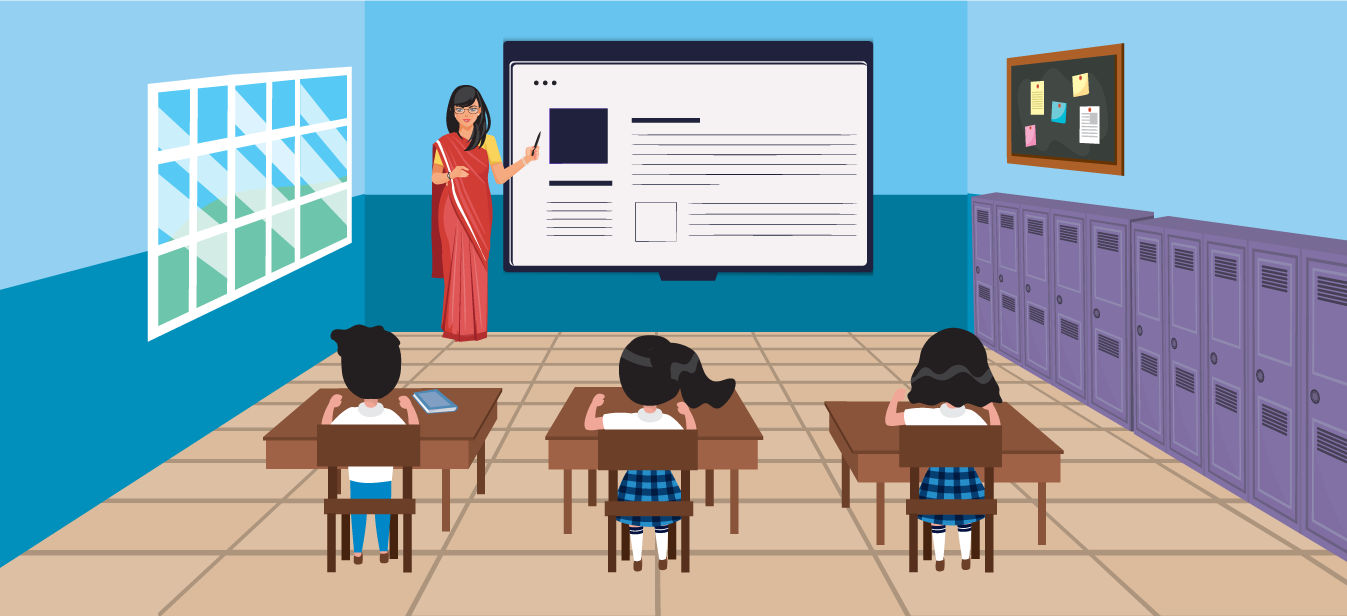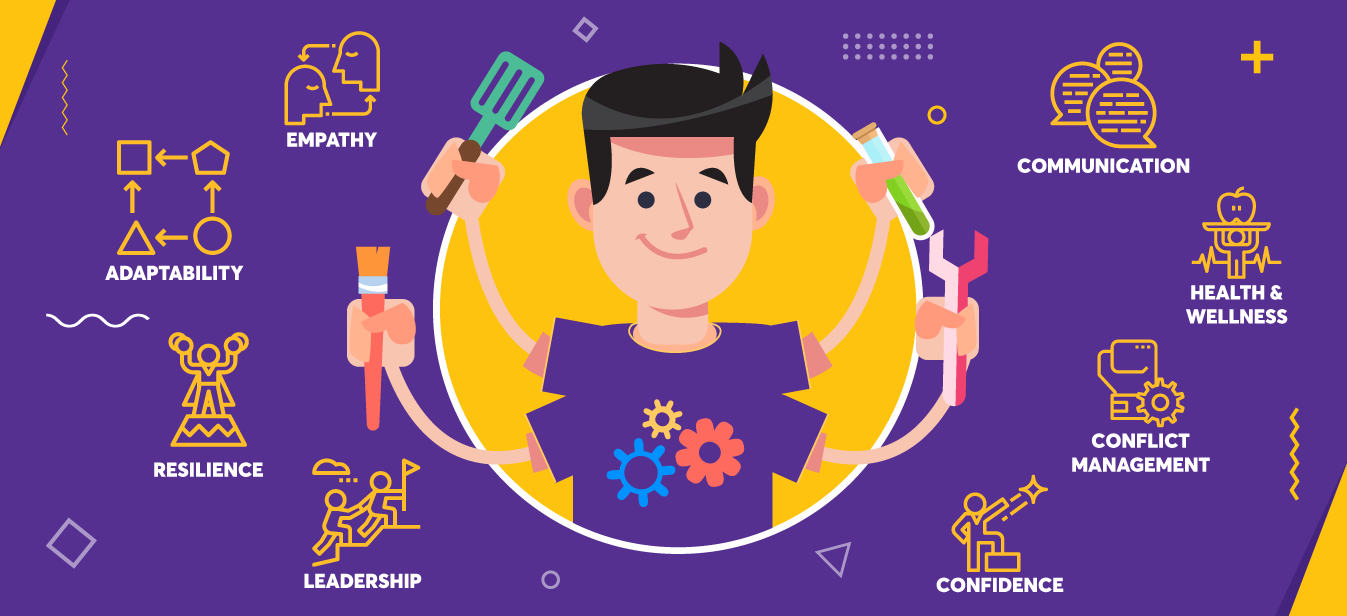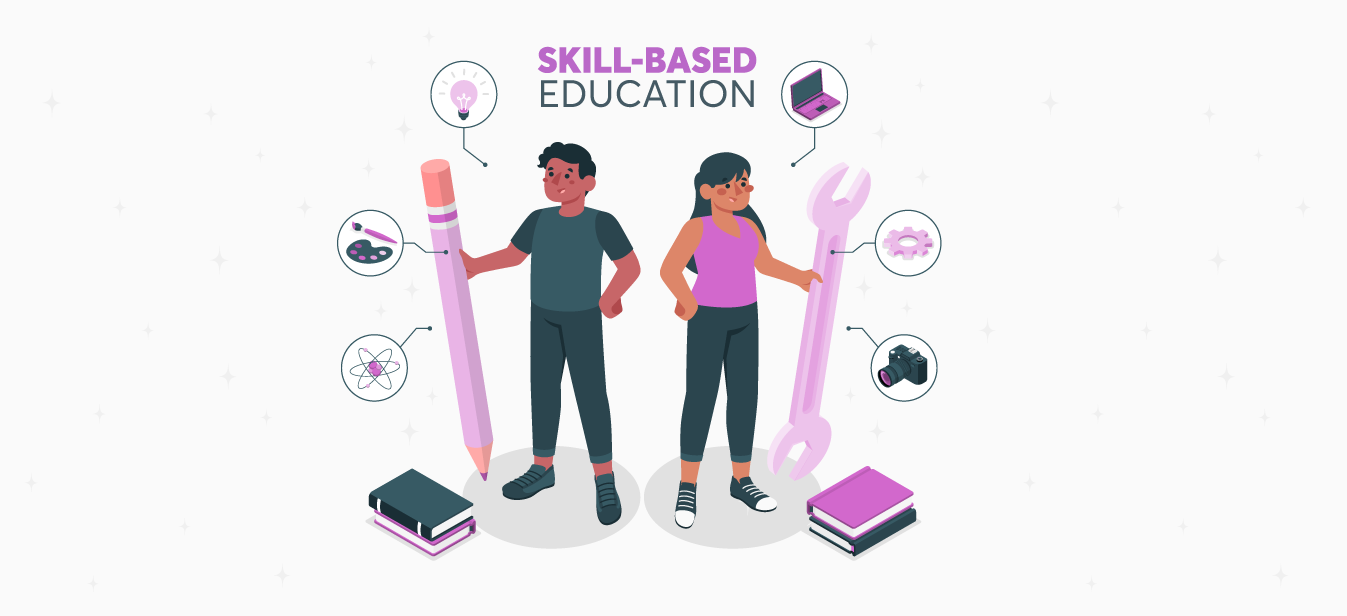Technology has become commonplace in nearly every aspect of our lives, so it’s no surprise that it has become an integral part of the modern classroom. Likewise, with the primary goal of making education more accessible to students around the country, it’s no surprise that technology has become a fixture in the classroom. From laptops and tablets to interactive whiteboards and more, future classrooms use technology to boost their lessons and provide students with an even better educational experience. Plus, a classroom environment significantly influences student performance, so it’s essential that the classroom is designed to be as conducive to learning as possible. This is why NEP 2020 aims to provide teachers and students with the right tools they need to facilitate learning in a way that is both accessible and affordable.
NEP 2020 Transforming the Ideal Future Classroom
NEP 2020 introduced the transformation of the curriculum and pedagogy to align with 21st-century skills. The curriculum across boards is being redesigned to be more flexible and interdisciplinary, focusing on developing critical thinking, problem-solving, and communication skills. This approach encourages students to think creatively, explore new ideas, and learn through hands-on experiences. The NEP 2020 also emphasizes the importance of experiential learning, which includes hands-on activities, field trips, and practical projects. This type of learning is seen as essential in developing real-world skills and preparing students for future challenges.
One of the recommendations in the NEP 2020 is integration of technology into learning. Such initiatives require teachers to be equipped with skills on effective use of technology. Students, likewise, should be provided with learning experiences that make the best use of technology, such as increased engagement, opportunities for communication, collaboration, critical thinking, and problem-solving.
However, the transition to technology-assisted learning has been challenging. Educators have had to adjust their teaching methods to accommodate these challenges and provide students with the support they need to succeed. Learning today is more than just the usual whiteboard and chalkboard. A myriad of things must be considered so that education keeps up with our fast-changing world. Thus, to set up ideal future classroom, here are some prerequisites:
Personalized Learning
With a growing population of students with diverse needs, we need to ensure that every child gets the help they need—and no two kids learn exactly the same way. Having all students in a traditional classroom setting may not be the best way to meet all student needs, so personalization will be key going forward as we look for new ways to personalize education.
By taking an active role in the personal development of each student, teachers can shape students to be more independent and confident learners. They can do this by creating a safe environment in which students feel comfortable participating in unique activities and exercises that are different from conventional activities that they may be accustomed to. In addition, the teacher observes each student’s progress and goals, and provides guidance when needed. For example, if a child has difficulty learning to read, the teacher could give them constant feedback on their work until they improve. This type of personal attention fosters a love for learning that may not be present in a traditional classroom where students compete for teacher’s attention.
Experiential Learning Combined with Rote Learning
Experiential learning is any activity where we can stimulate the senses and make a concrete connection to real life, instilling a passion for learning. On the other hand, Rote learning is memorizing facts and figures that can be easily recalled when needed. These two learning styles are not mutually exclusive—in fact, they complement each other perfectly. A well-rounded education should include both types of learning to allow students to flex all their mental muscles.
Unfortunately, many schools still focus on a traditional approach that relies heavily on rote memorization with limited opportunities for concrete experience. This results in graduates who may be able to recite facts but are not confident in applying real-life skills. By providing students with a mix of hands-on experiences and memorization, schools and teachers can ensure that students receive a well-rounded education that prepares them for future. By allowing students to participate in experiential learning, they develop strong practical skills that complement the theoretical knowledge they learn in class. Through projects and internships, students can gain valuable experience that they can use later in life to further expand their careers. All of this will come together to create graduates ready to start their employment prepared to handle whatever comes their way.
Development of 21st Century Skills
Imagine a classroom where students are given the freedom to explore, create, and are equally prepared for the present and the future. A classroom where students are encouraged to be curious about everything, including themselves. A place where students feel comfortable taking risks, knowing that they will be supported and will benefit from the results. How does such a future classroom exist?
Often in education, we take great pains to ensure that concepts are clearly defined so that students learn what they need to know to pass tests. While this is important to ensure that students graduate with an understanding of specific subjects, it doesn’t necessarily prepare them for real-world situations and problems. As the world around us becomes increasingly complex, students must be given opportunities to learn how to solve problems and make decisions in a structured and free-flowing environment. The future classroom must allow students to develop the complex thinking, learning, and problem-solving skills they need to become effective citizens in the 21st century. These skills include:
- Critical thinking, which will allow them to make sense of an increasingly complex world filled with uncertainty and ambiguity
- Communication skills, which will enable them to convey their ideas, opinions, and knowledge effectively
- Collaboration skills, which will help them work effectively with others in both formal and informal situations
- Lifelong learning ability, which will permit them to adapt their knowledge and talents as new information becomes available.
The Bottom Line
The future classrooms will look drastically different from the current ones. And though the changes may initially seem vast, such transformations are beneficial for uplifting the education landscape of India. The challenge now lies in implementing these changes effectively- training teachers on new pedagogical techniques, coordinating across multiple classrooms, and developing integrations with existing course materials.
Square Panda India has a demonstrable track record of successful education interventions across India. We have a comprehensive array of products and programs that aim to improve learning outcomes from pre-primary through secondary grades. Square Panda India envisions transforming the nation’s education landscape by focusing on the holistic development of each education stakeholder. To know more, visit ecce.squarepanda.in










